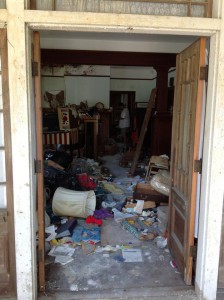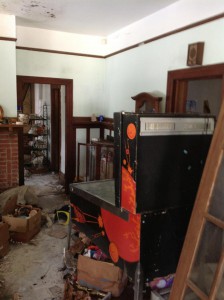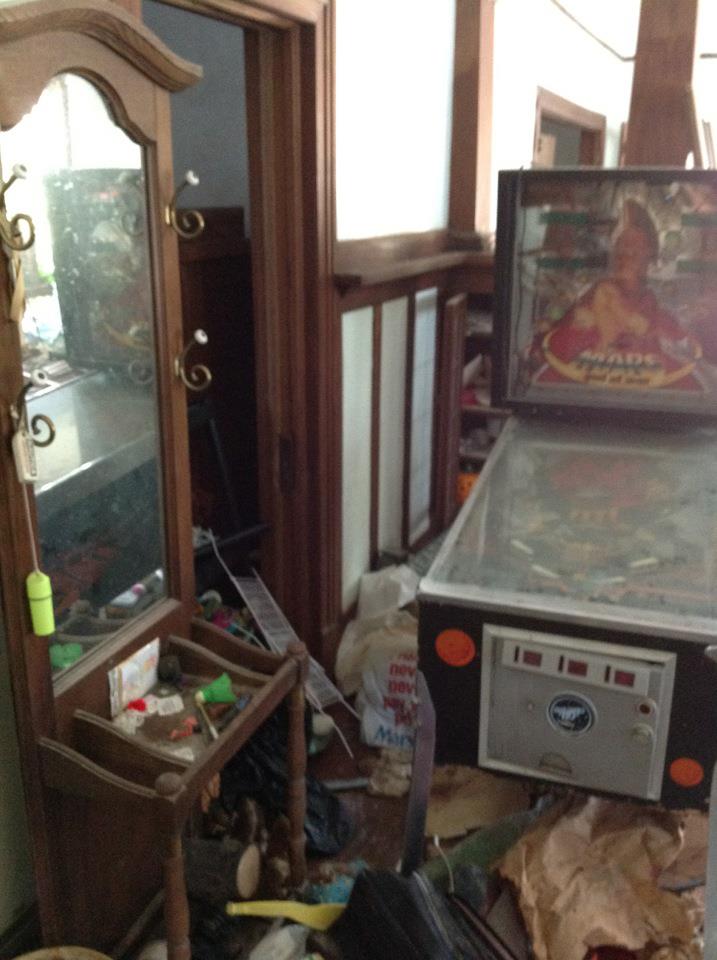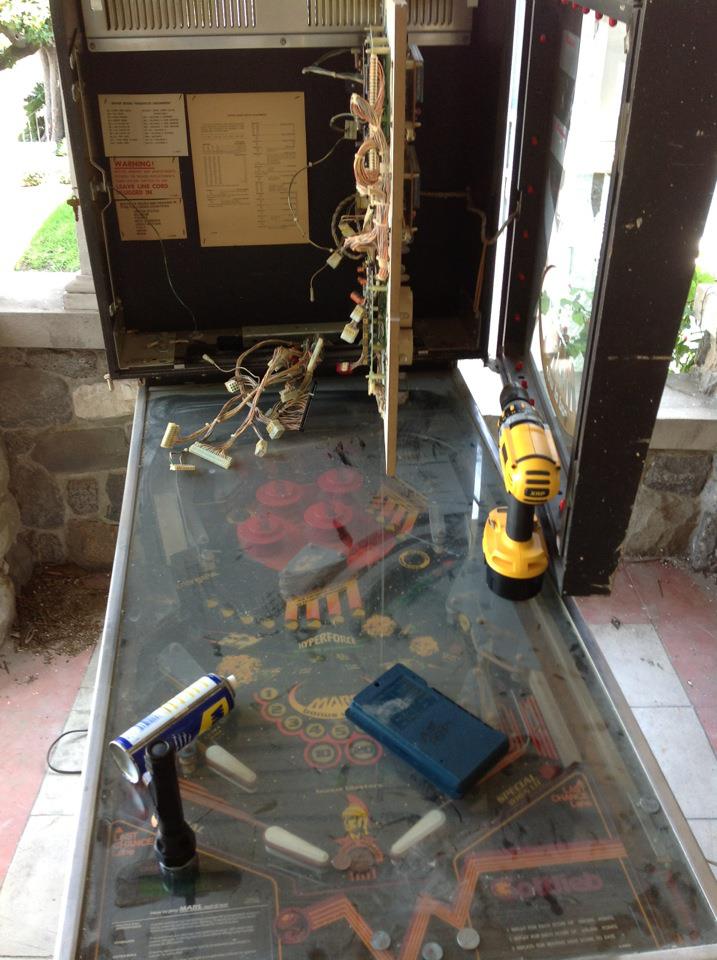These days I’ve been working more on renovating my new pinball space.. that’s going to be an ongoing project now for the next few months, and as a result, I’ve been avoiding going on any pinball hunts, but the other day an innocuous ad appeared in the local paper for a short estate sale with “pinball machines”. It was nearby and I didn’t have any conflicts so I thought I might drive by and check it out.

As it turns out the pinball machines were not at the location of the estate sale. They were at another abandoned house that was wrecked by hurricane Katrina. I managed to talk the owners into letting me take a peek – they were very concerned about people even entering the other house because the roof had collapsed and there was mold, broken glass and debris everywhere. It’s really a shame because I could tell this house used to be very nice, but the occupants just left and never came back and everything inside deteriorated.
When we got to the place, the first game we discovered was a disappointment… it was not an actual coin-op game, but instead a circus-themed home-version pinball game. Of no interest to me. The other game turned out to be a Gottlieb Mars God of War — made in 1981. A System80 game. It didn’t look too bad but it was nothing that got me very excited and once I started looking around I realized there were no keys to the head so it would have to be drilled out to access and remove the head. I was going to walk and not even make an offer, but my friend Matt said, “How about $50?” The sellers were asking $250. All I could think about was how many years would be taken off my life expectancy for every minute standing inside this mold-encrusted room trying to access the game and was it worth any amount of money?
When we explained what was probably needed to get the game working and to move and disassemble it, the sellers agreed on the price of $50. It was hard to tell what condition the game was in or even if any boards were in it because we couldn’t get into the head. I said I’d head back home to get some equipment — the house had no electricity so I needed to bring power and a drill to get into the lock. On the way back I contemplated whether or not it was worth it. I knew it was a decent deal but like I said, I’ve been becoming increasingly picky. I spoke to my friend Wes and he reminded me, we are now working on a new space that can house a lot more games and these funky, uncommon titles are exactly the kinds of things we should have, and he was right. So I confirmed with the sellers we’d be back to get the game.
And here we are..
Right now we just picked up the game and moved it into the new space and threw a tarp over it. I hope to continue the video series exploring the game but it’s probably going to have to wait a few weeks.

There are exciting things happening here.. We’ve formed a local pinball club and everyone is helping refurbish an abandoned church – it’s a time consuming and expensive proposition, but very rewarding. I’ll be sharing progress on that as we go too, and now we have another cool game to restore and add to the collection that those that visit will get a chance to play!
Also, after opening the head, it was discovered that the game is complete, but as expected, the battery on the MPU has heavily damaged the board. This was a good excuse to order one of Pascal Janin’s PI-80 boards. We’ll want to have one around anyway — that’s another thing I’ll do a video report on soon. The downside is, at present, the replacement System 80 board is a whopping $390 shipped! When you look at the average sale price/value of these System 80 games, and think, “Wow, he got that game for $50 what a steal!” and then realize right away it’ll cost $400 just to get it to boot up, and the game may only be worth $400-$600, $50 is about right. These 80s-era Gottliebs are not profitable to restore, but I can justify it when I’m making these videos to share with everybody else. I hope you enjoy them! – Mike


